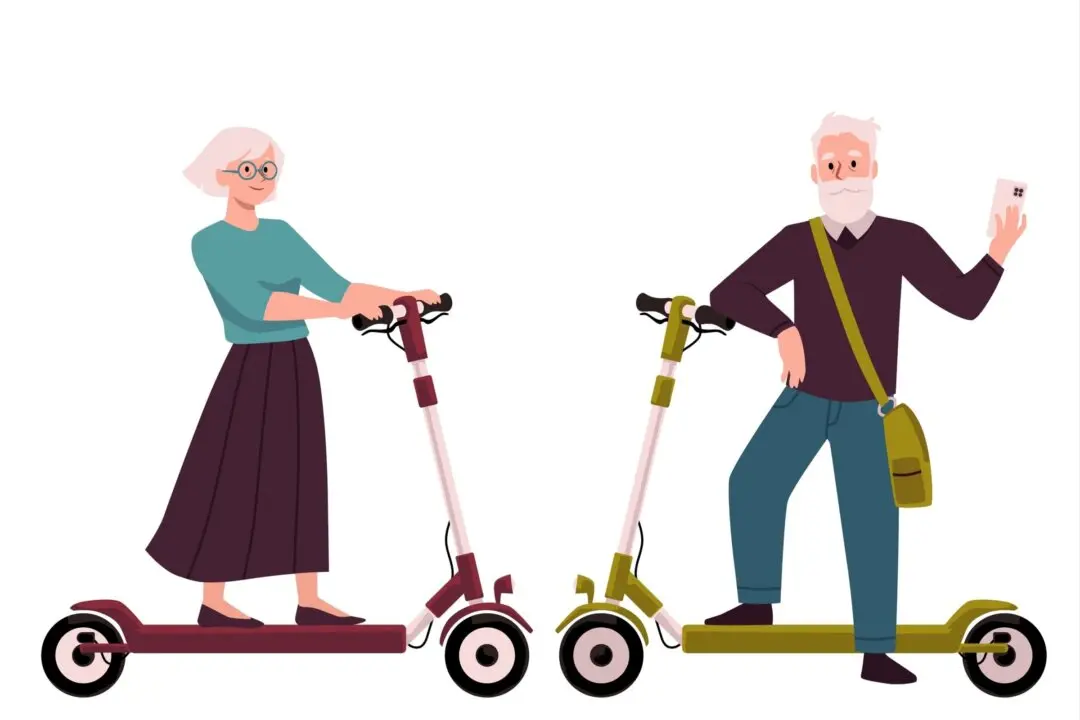TORONTO—Gravity has proven itself a heavyweight at the Toronto International Film Festival (TIFF) generating Oscar buzz for director Alfonso Cuarón and actress Sandra Bullock.
The world premier screening for industry and journalists launched a line to get in that orbited the interior of the Scotia Bank Theatre’s very long flight of stairs and beyond on Saturday.
Critics have been free-falling in love with the gripping tale of a space mission gone awry and the performance of Sandra Bullock, who plays astronaut medical researcher Ryan Stone.
Bullock stars alongside her long-time friend George Clooney, who she has known since college when neither of them had work, she said.
The film begins with a silent bang when the space station that offers the astronauts a thin shell of protection against the soundless freeze of space is largely destroyed.
Cuarón said that shot and others posed major challenges because of the physics of space, where there is no horizon, weight, ups or downs. To get the job done, they needed to create a host of innovative filming gear, some high tech, some notably low.
On the high end was a racing robotic arm—the kind used to build automobiles—that would dash towards Bullock on a set of tracks. It required precise control, explained producer David Heyman at a press conference Monday.
“It has to stop on a dime, because it if doesn’t, it goes straight through her face,” he said.
Bullock joked that she loved her job upon hearing that, and Heyman apologized for not telling her of the danger previously.
On the low end was something called “the bicycle seat” that Bullock would sit on with one leg strapped in to get the effect of flailing limbs of weightlessness. There was also an office chair on hydraulics, and at times she became a human puppet with wires controlled by puppeteers to give her a weightless appearance.
“It was more like being part of Cirque du Soleil,” said Sandra who said she is a fan of the contortionists.
“It was the most bizarre series of contractions.”
Despite all that innovation, Gravity was a gruelling film to act in. Cuarón joked it was torture. Locked in her space suit for hours a day, her movements restricted, unable to talk to anyone but the director, sometimes strapped into those contraptions, Bullock said the pain of it all was necessary and helpful for her portrayal of Ryan, who suffers in similar ways.
She said she took the role believing early on that many shots would be done on the “vomit comet,” an airplane that flies downward so its passengers experience moments of weightlessness. Bullock is deeply afraid of flying, but said there were benefits to being forced into situations she would rather avoid.
“To be out of your comfort zone, as I learned on this, unlocks things that scare you, frustrate you, make you so insecure. But it also forces you to dig very deep.“
It was Bullock’s willingness to suffer through the film that makes much of Gravity possible.
“If you knew what it required to make each one of these shots, I don’t think there are many people that could achieve that,” said Cuarón.
“The determination of Sandra is scary, maybe that is her German side,” he joked.
But Bullock was not the only scary person central to the film, producer David Heyman said Cuarón was a scary director because of his efforts to push boundaries and his team. In turn, Cuarón joked that Heyman was the Machiavellian producer because of his efforts to get the most out of Bullock, such as not telling her the plan to use the “vomit comet” was abandoned until the very last minute so that she would be more willing to endure the other hardships they were to replace it with.
“Working with this technology, it is so alien and inhuman, and to find someone who can work with that, yet bring the truth to every moment … is amazing,” Heyman said of Bullock.
Bullock seemed to take it all in stride, joking with an easy humour like her feigned fury over not being Cuarón’s first pick for the role of Ryan or kidding that the excruciating conditions of the shoot were a type of necessary water boarding.
The film took 4.5 years to make, though most of the work was done in the last two, said Cuarón. Despite that time frame, when the time came for it to be finished, he had to tell the studio he needed another year.
Lucky for himself and audiences now watching the film, Warner Brothers was both patient and generous, giving the director immense resources, a large budget and leaving him alone to do what he does very well. The result is a film that even David Cameron is gushing over.
Despite the big budget, Gravity is rooted in the storytelling. In fact, the first time Cuarón and Bullock met, they did not talk about space, but only of the film’s themes, most importantly the idea of rebirth through adversity.
Cuarón said it was a “wow moment” to realize that Bullock was more than an actress, but in fact another collaborator to help shape the role and the film.
The story was the brainchild of Jonás Cuarón, Cuarón’s son. The younger Cuarón said he wanted a 90 minute nail biter that could pull in larger themes while putting the audience through an emotional ride.
On that point Gravity completed its mission.





